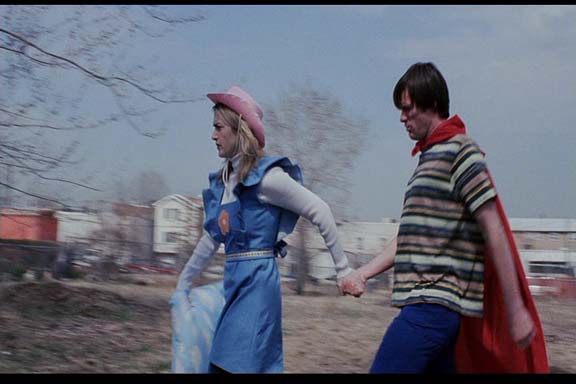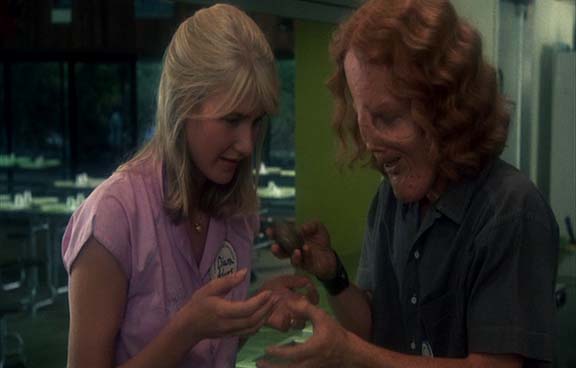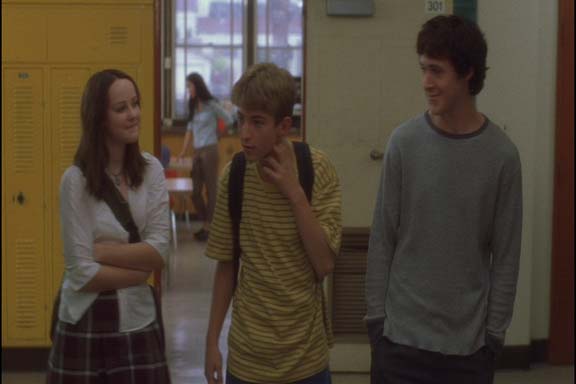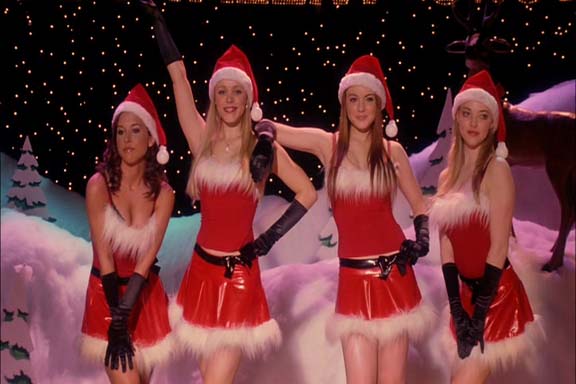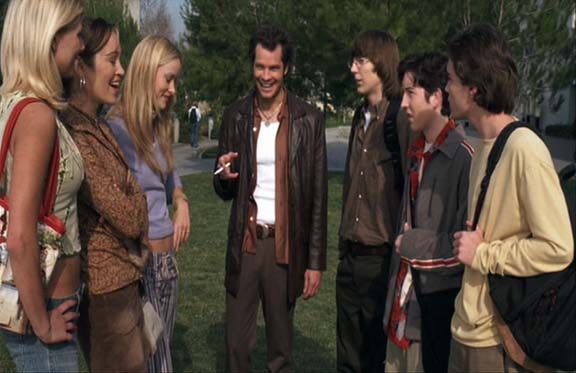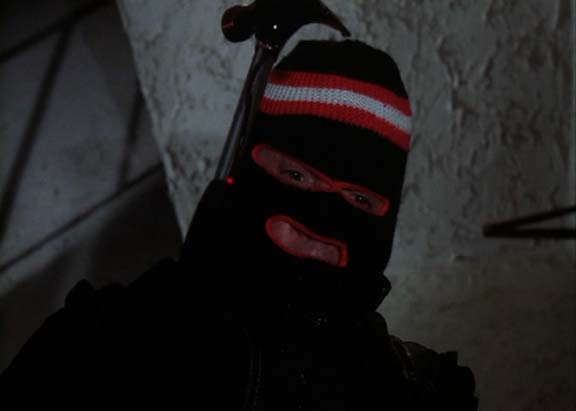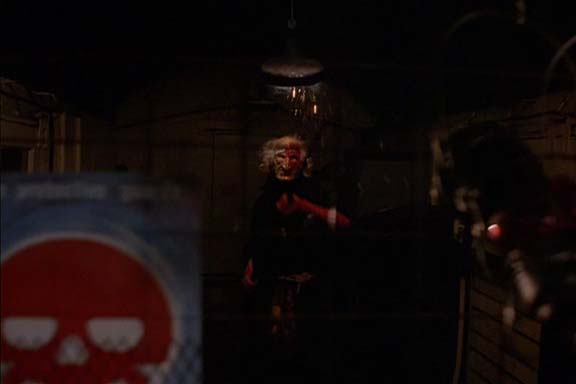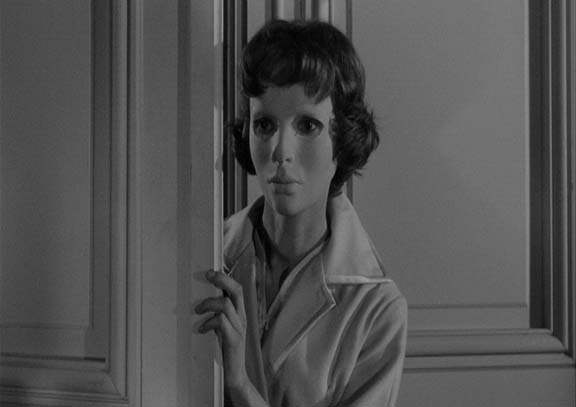Hi, everyone. "Moriarty" here with some Rumblings From The Lab...
Man, I’m gonna have to get better at this. Or faster. Or both.
When a company goes out of their way to send a title, I feel obligated to review it, good or bad. That’s in addition to all the stuff I buy myself that I want to talk about. There are plenty of titles I want to cover this fall coming out theatrically, too, so this whole thing becomes one massive ongoing exercise in time management.
Best way to maximize my time? Give myself a new regular feature to include in each column. Smart, eh? What I want to do is begin a list of titles that I consider essential to any home video library. I’ve gotten a lot of mail from you guys over the years asking for something like this, and I figure I should take the opportunity to single out some of the greatest titles of all time for the praise they deserve.
Like I’ve said, I love writing this column. In the last few months, more and more studios have added me to their screener lists, and I’ve noticed that studios are getting more and more aggressive about how they release their big titles, throwing parties and special events that are as big and splashy as their regular premieres.
One of those special events I mentioned took place at the Academy of Motion Picture Arts and Sciences last month, a special 10th anniversary celebration of THE SHAWSHANK REDEMPTION. I went to the premiere of the film in that same exact theater a decade ago, and it’s nice to see how much the film’s reputation has grown in that time. I know the movie’s become omnipresent on TNT, but I hate watching TV cuts of films. I haven’t seen the movie in about seven years. Seeing a show print on the big-screen was a reminder of why it’s become a favorite of audiences. Simply put, it’s a great story told well with flawless performances from a full ensemble. I would go so far as to say that this is one of the very best uses of narration in any film. Morgan Freeman’s voice is hypnotic, the perfect guide through the dramatic emotional shifts of the story of Andy Dufresne. After the screening, Mick Garris hosted a reunion of director/screenwriter Frank Darabont, producer Nikki Marvin, production designer Terrence Marsh, and about twenty of the actors from the movie. Tim Robbins was stuck in London, evidently, but Freeman was there along with James Whitmore, Bill Sadler, Clancy Brown, Bob Gunton, and many others. If you’ve ever heard about the supposed friction between Darabont and Freeman, it certainly seemed to be on display during the Q&A. At one point, everyone was offering up anecdotes, and Garris asked Freeman, “Would you like to share any stories about working with a first-time director?”
Freeman responded with a curt, simple “No.” Got a laugh, but I’m not sure it was meant as a joke. Didn’t matter, though, because the rest of the cast and crew shared more than a few stories, and it’s obvious that for most of them, THE SHAWSHANK REDEMPTION stands as a career milestone. With the DVD special edition now on shelves, everyone’s going to have a chance to dig back into this quiet masterpiece, and it speaks well of Warner Bros. that they are paying proper tribute to it.
Time to get to the reviews, and as always, I’ve got my entire DVD collection set up at DVD Aficionado, a great site that I’ve enjoyed working with. With very few exceptions, I’ve been able to find all my titles in their archives. You can check it out right here if you’re curious, and I’ve made sure to point out what was purchased, what was sent as a screener, and what was a gift, since so many of your e-mails seemed to think that was so urgently important.
(Click header to go directly to the section)
THE ESSENTIALS: OUT OF THE PAST
SUPER SIZE ME
LOVE ME IF YOU DARE and SPRING, SUMMER, FALL, WINTER... AND SPRING
MULAN: SPECIAL EDITION, ALADDIN: PLATINUM EDITION, KAENA: THE PROPHECY and HOME ON THE RANGE
THE HUMAN STAIN, DOGVILLE and COLD MOUNTAIN
MR. SHOW: THE COMPLETE FOURTH SEASON and DA ALI G SHOW: DA COMPLEET FIRST SEAZON
ETERNAL SUNSHINE OF THE SPOTLESS MIND
MASK, THE UNITED STATES OF LELAND, THE GIRL NEXT DOOR, and MEAN GIRLS
HORROR-THON 2004 BEGINS! THE TOOLBOX MURDERS, GHOSTS OF EDENDALE, THE BOSTON STRANGLER, TERROR TRAIN, THE NIGHT STALKER, EYES WITHOUT A FACE, GHOST STORY, TROUBLE EVERY DAY, BLACK CHRISTMAS, SSSSSSS, THE LEGACY, GINGER SNAPS BACK, HE KNOWS YOU’RE ALONE, I MARRIED A MONSTER FROM OUTER SPACE, IT’S ALIVE, IT LIVES AGAIN & ISLAND OF THE ALIVE, and THE SENTINEL!!
THE ESSENTIALS: OUT OF THE PAST
One of the great things about DVD is the way the studios are rushing to dig deep into their libraries to keep up the flash flood of titles, week after week. Recently, both Universal and Warner Bros. put out a big batch of film noir titles. Out of all of them, one title in particular had me drooling from the moment it was announced.
The last time I owned OUT OF THE PAST, it was the old Image laserdisc release. This is one of those films I can watch any time, for any reason, and I never get tired of it. This is one of the great movies of the studio era, one of those pictures where everything came together almost as if by magic. I enjoy the work of the director Jacques Tourneur, best known for his collaborations with producer Val Lewton like CAT PEOPLE and I WALKED WITH A ZOMBIE, stylish smart adult thrillers with a great sense of how to handle the supernatural without making it silly. Hands down, though, this is the best film he ever directed. Working from an inspired screenplay by Geoffrey Homes adapted from the novel BUILD MY GALLOWS HIGH, Tourneur crafted a jet-black character drama that feels as fresh now as when it was first released.
If I wanted to try and explain the enduring appeal of film noir as a genre, everything I love about it is exemplified by this one movie. There are certain conventions that define what film noir is, and how successful a film is artistically comes down to how well it uses those conventions. For example, if you’re looking for a world-weary cynical tough guy lead, Robert Mitchum is the archetype, and he never had a role that made better use of his slow-eyed charisma. You need a femmme fatale worthy of such an iconic lead, and Jane Greer is as bad a bad girl as there has ever been, shit hot and sharp as a razor. Every great love triangle needs that third point, and Kirk Douglas gives great sleaze as the mobster who puts Mitchum on her trail in the first place.
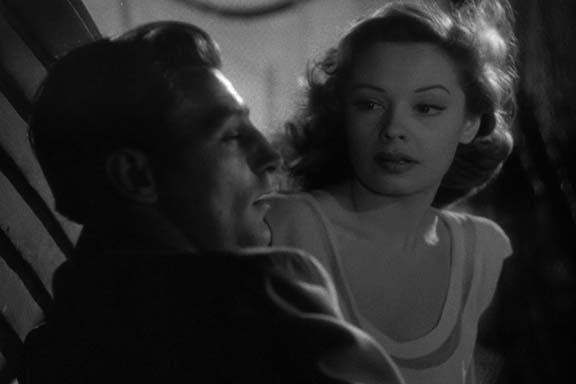
Basically, this is the story of a poor sap private detective who gets hired by a gangster to track down his girlfriend after she shoots him, steals a wad of cash, and hits the road. When the detective meets her, sparks fly, and sooner or later, everyone gets burnt. I won’t summarize the plot any more than that. As with any great noir film, half the fun is negotiating this labyrinth of betrayal and bad behavior. There’s a particular twisted genius to the way the narrative uses flashback structure, turning inside out for well over a half-hour at one point. It’s daring, and it forces the audience to reassess the way films typically set up sympathy for characters. The dialogue in the film is pure hard-boiled pleasure, like when Mitchum’s trying to describe Jane Greer to another woman. Incredulous, she says, “Nobody’s all bad.”
”She comes the closest,” Mitchum fires back. Dialogue this rich makes me laugh with glee, and every viewing gives me a new line to fall in love with. Visually, the film’s just as impressive. The black-and-white photography is incredibly rich, a mixture between real locations and studio sets that works beautifully. The film never quite feels real. It’s more like a fever dream, a spurred lover’s nightmare. Scene after scene, these images sear the subconscious... a sudden rainstorm, a tryst on a Mexican beach, an ambush by a river amidst giant rocks... all gorgeous. This DVD is the single nicest home video reproduction of the film that I’ve seen so far.
Warner Bros. didn’t exactly pack the disc with extras, but they did include a commentary by film-noir specialist James Ursini. Even if there were no extras, this is the kind of film that rewards repeat viewings. It’s the sort of film you’ll want to share with others once you’ve been exposed to its particular charms. There is no darker ending than this one, but I always find it oddly exhilarating. “Build my gallows high,” indeed.
SUPER SIZE ME
Like anyone who grew up in America, fast food has always been part of my life. If you’ve seen photos of me online over the past few years, then you can probably guess how big a part it was. The strange thing is that I don’t really like the stuff. Sure, it tastes good. Some of it, anyway. But the effects of eating it are physically uncomfortable, to say the least. It’s just that it’s easy, and it’s omnipresent, and it’s second nature in our culture. When I made a decision at the start of the year to do something about my ever-increasing gravitational pull, one of the first things I had to do was cut out the fast food entirely. It turned out to be one of the best decisions I’ve ever made. Once I did, I gained a different perspective on how ingrained it is in everyday life. It’s hard not to view America as a nation of addicts, all held in thrall by the most effective drug pushing machine ever built.
Because all of this has been on my mind, SUPER SIZE ME is the flavor of high-profile agit-prop documentary that I prefer this year instead of any of the political screeds we’ve been hammered with. For one thing, Morgan Spurlock made his dissection of fast-food culture entertaining, first and foremost. The fact that he scores some great knockout punches is just an added bonus. What amazes me is how angry people seem to get when they dismiss this film or when they attack Spurlock and hi motivations. You can stick your fingers in your ears all day long and chant, “Everyone knows McDonald’s is bad for you,” but it’s stupid to just dismiss the film as an exercise in willful self-abuse. Yes, the gimmick of the film is undeniably cheeky. Spurlock decided to spend a month eating nothing but McDonald’s food for every meal. He set up a few rules for himself: he couldn’t eat anything that isn’t sold at McDonald’s, he had to eat everything on the menu at least once, and if he was asked if he wanted to super-size his order, he had to say, “yes.”
At one point, just as he’s beginning, Spurlock seems almost giddy about the prospect, saying, “I’m about to live every kid’s dream.” He changes his tune pretty quickly, though. His first super-sized meal stays down for about ten minutes before ending up sprayed across the pavement of on a parking lot. To be fair, he seems to eat very little fast food in regular life, so it must come as a shock to his system. He’s used to the cooking of his girlfriend, a vegan chef. What happens over the 30 days of the film is obviously not typical, but it’s not meant to be. Spurlock’s not saying that you’re going to experience the same health issues he does just because you eat at the restaurant a few times a month. In fact, he goes out of his way to include a guy in the movie who eats two Big Macs a day, every day, and who seems to be average weight and in pretty good health overall. Spurlock knows full well that what he’s doing is an extreme stunt, one that he uses to frame the film’s key content. You could almost take this as the film companion to Eric Schlosser’s FAST FOOD NATION, and this is where the film excels. The film isn’t about how bad for you one brand of fast food is. Instead, it’s about how toxic the entire culture around fast food is, and in particular, it deals with the insidious way they reach children and convert them before they even understand what they’re getting into. One of the most impressive sections of the film deals with the way fast food and soda companies have co-opted the entire school lunch system for American children, and it asks some hard questions about how and why we allow this to happen.
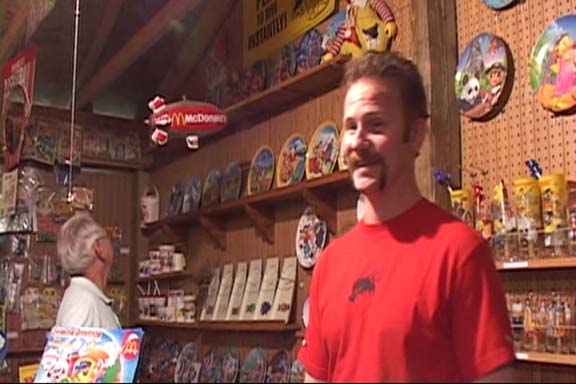
The disc is really nice, especially for an independent release. Hart Sharp Video has loaded the disc with extra footage, a very sharp and funny commentary by Spurlock, a great interview with Schlosser about his book, and more. In particular, I would direct your attention to the deleted scene called “The Smoking Fry.” I don’t want to ruin it for you, but I’ll say this: McDonald’s French fries are evidently not of this earth. There’s an insert booklet featuring the recipes for all the dishes served at Spurlock’s last healthy dinner before embarking on the experiment, and it’s all delicious, ultra-healthy fare, an unexpected extra for any DVD. This is a disc well worth picking up for anyone who pays attention to what they eat and how it’s made.
And for anyone who’s curious... 60 plus pounds so far this year, with at least that much more to go. And I’m lovin’ it.
Because international filmmakers rarely work with the same sorts of giant budgets that Hollywood films have, they aren’t faced with the same commercial demands. Personal visions have a greater chance of surviving intact, and it means you can discover some truly eccentric films if you go looking.
Paramount Home Video is releasing LOVE ME IF YOU DARE this month, the debut film from French director Yann Samuell. Harry fell in love with this one earlier this year, but I missed it completely during its brief theatrical run. I’d tell anyone who loved AMELIE to seek out this unorthodox romantic fable, but be prepared... there’s a lot to like here, but it’s messy and undisciplined in many ways. It’s a first film, and in many ways, it’s just as frustrating as it is entertaining.
Julien and Sophie meet as eight-year-old children, played charmingly by Thibault Verhaeghe and Josephine Lebas-Joly. Both of them are dealing with their own miseries, as Julien’s mother (Emmanuelle Grenvold) lays in bed dying of cancer and Sophie has to confront the racist jibes of her classmates. The two of them reach out to one another, and they create a private game that shuts out the rest of the world based on ever-escalating dares. Julien’s father (Gerard Watkins)is distressed by the budding friendship, but he also realizes he has no idea how to handle his son’s grief when he can’t even manage his own.
When they become adults, Julien (Guillaume Caret) and Sophie (Marion Cotillard) continue their game, but the stakes get higher and the effects become more emotionally painful. Both actors are good, but it’s really Cotillard’s showcase. She is a mercurial presense, flashing from emotion to emotion at a moment’s notice, confounding all of Julien’s attempts to understand her. It’s a lushly photographed film with a wonderful score by Philippe Rombi, and at its best, the film works as a mood piece, even if the narrative occasionally rushes through big moments while taking strange left turns that go nowhere. Ultimately, I’d recommend the film, and Paramount’s done a beautiful job with sound and picture, creating something special.
I have no hesitations whatsoever about telling you to pick up a copy of SPRING, SUMMER, FALL, WINTER... AND SPRING, the latest Ki-duk Kim film to get released here. This is one of my very favorite films of the year, and it serves as a great place to introduce someone to the work of this enormously gifted filmmaker. It’s nowhere near as brutal as earlier films like THE ISLE or BAD GUY, and as a result, it may be easier for some to appreciate just how great he is.
This film consists of five interlocked Zen koans, each dealing with a different stage in the emotional and spiritual development of a monk. The film starts with an Old Monk (Yeong-su Oh) taking care of a Child Monk (Jong-Ho Kim) on a small floating building in the middle of a lake. The Child Monk spends one day entertaining himself by tying rocks to a fish, a frog, and a snake, watching them struggle under the weight. The Old Monk teaches him a lesson about his actions that marks the Child Monk deeply. In the second segment, the Boy Monk (Jae-Kyeong Seo) has to deal with the awakening of sexual desire when a sick Girl (Yeo-jin Ha) comes to them for healing. When the Young Adult Monk (Young-inin Kim) tries to deal with the fallout from this in the third segment, the results are seemingly catastrophic for everyone. My favorite segment is the fourth one, where the director shows up as the Adult Monk, determined to heal his own frozen heart. When the film comes full circle, the impact of that fifth segment is powerfully uplifting.
This is a deceptively simple picture, and Ki-duk Kim is given incredible support by his cinematographer, Dong-hyeon Baek, as well as his composer, Ji-woong Park. Long stretches of the film feature no dialogue whatsoever, and there’s a meditative quality to the film that is transporting. In these five simple sequences, the director has summed up much of what binds us all together as human beings. CTHE’s transfer of the film is visually striking, but I wish they’d done more, like include some sort of behind-the-scenes material. Right now, I’d include this director on a list of the fifteen most important and vital voices in cinema working anywhere in the world, and this could have been a more impressive record of this amazing artist working at the top of his game. It’s an important disc, nonetheless, and I urge you to take a chance on it.
Disney’s Platinum Edition 2-disc release of ALADDIN is one of the best special editions they’ve done for any of their animated classics, and it’s nice to see the film got the treatment it deserves. If you consider the modern era of Disney films to have begun with THE LITTLE MERMAID, then I’d say ALADDIN is one of the five best films of the bunch. It might be hard for someone seeing the film for the first time now to understand just how groundbreaking it felt when it was released, but it’s influenced almost every major animated film since. In particular, it was the attitude of The Genie, as voiced by Robin Williams. Try to find a mainstream animated film without that kind of rapid-fire patter and pop culture references. This also marked one of the first major steps forward in the marriage between CG and cel animation, with some sophisticated material that still holds up today, like the character of the magic carpet. I’ve always enjoyed the film’s action scenes and the crazy dark magical finale, and it’s never looked as good as it does here. When you’re looking for a company that takes good care of its material and knows how to clean up a print, Disney has to be considered one of the standard-bearers.
Disc One is loaded enough to count as a special edition in its own right. There’s the film, the incredible new 5.1 Dolby Digital Enhanced Home Theater Mix, deleted scenes and deleted songs, a commentary track by the directors, another by the animators, music videos by Clay Aiken, Jessica Simpson and Nick Lachey, and one of those pop-up facts tracks. Disc Two is all about “A Diamond In The Rough,” the making-of documentary. It’s huge and exhaustive and loaded with great material. If you’re a fan of animation and the process that goes into creating these films, this is pure pleasure. In particular, I can’t say enough about all the stuff including Eric Goldberg and The Genie. It’s an invaluable look at what went into creating an icon. There’s also a great separate feature about Alan Menken, who deserves any amount of ass-kissing the company wants to dish out. If Disney can continue to live up to this level of quality with their next two Platinum releases (BAMBI in March of 2005 and CINDERELLA in October 2005), then fans are in for a continuing treat.
In the meantime, there are plenty of other animated titles in the Disney library, both new and old, that get excellent treatment in their own right. I skipped HOME ON THE RANGE in the theater, in part because of all the development troubles the film had since starting life as SWEATING BULLETS. Looking back at all the reports we’ve been sent by Disney spies over the years didn’t exactly instill me with confidence. Oddly, though, I found the final film to be quite charming and funny. It helps that Alan Menken’s come up with one of his most unusual Disney scores, working largely with cowboy music as inspiration. Artists like k.d. lang and Tim McGraw contribute winning vocal performances, with one stunner by Bonnie Raitt in the middle of the film called “Will The Sun Ever Shine Again?” that deserves a Best Song nomination this year. The film is pretty much a full-stop comedy about Maggie (Roseanne Barr), Grace (Jennifer Tilly) and Mrs. Calloway (Judi Dench), three cows determined to save the ranch where they live from a cattle–rustling land baron. My favorite character in the film is Buck (voiced by Cuba Gooding Jr.), a horse whose one dream is to ride with Rico, a famed and feared bounty hunter. Many of the film’s biggest laughs come from Buck’s overexcited reactions. Randy Quaid also does some very funny work as Alameda Slim, the bad guy, including a hilarious song in which he details his ability to hypnotize any cow with his yodeling skills. The film’s beautifully designed, and it makes me sad to think that half-hearted marketing might be responsible for the death of conventional 2-D animation at Disney, especially when this is far from being the worst of their films. The disc has several deleted scenes, a short documentary that just barely touches on the development troubles the film went through, and some kid-centric games and extras, and the sound and picture are top-notch. Give this one a chance, and you may be surprised.
Even though I’m not the biggest fan of MULAN, I think there are things to like about it. There would be no Donkey in SHREK without Mushu in this film, and there are some great action scenes, beautifully staged. The weakest thing about MULAN is the generic song score by Matthew Wilder and Vanessa Mae. Disney’s done a great job of gathering up every possible tidbit about the production for the comprehensive documentary on disc two, and the best material has to do with how they chose the particular visual style of the film, drawing on traditional Chinese art as inspiration. Disc One’s got a fair sampling of deleted scenes, including the various openings they experimented with, and four music videos by Christina Aguilera, Stevie Wonder and 98°, Jackie Chan, and Raven. What impresses me most is how this isn’t considered one of the company’s major efforts. If everyone put this sort of time and energy into every special edition, consumers would hardly have time to watch them all.
Anyone wondering why Disney continues to dominate the animation market need look no further than KAENA: THE PROPHECY, which CTHE released last month. A CG animated fantasy feature starring the voices of Kirsten Dunst, Richard Harris, and Anjelica Huston doing her 10,000th riff on her CAPTAIN EO performance, KAENA is incredibly empty and devoid of anything resembling narrative urgency. I am all for the idea of independent animation companies doing their best to level the commercial playing field, but for that to happen, they’ve got to work harder than Disney, and their films have to be better. Disney’s marketing machine is unbeatable, so the only way you can ever hope to compete is by being unarguably better. KAENA’s one of those generic fantasy stories about a girl, a prophecy, and some deeply underdeveloped bad guys, and it never adds up to anything. I can’t even recommend it for the visuals. By now, most video games look at least this good, and in many cases, they’re more dramatically satisfying, too. The only god thing on the whole KAENA disc is the MIRRORMASK trailer. There’s a radically different vision of fantasy that I can get behind. The notion of a 90-minute moving Dave McKean painting sounds pretty damn good to me. You can find the trailer online now, though, so I can’t imagine any reason to add KAENA to your collection.
Right now, Nicole Kidman is attached to star in three out of every five movies in development. And not just at the major studios, either, since she seems perfectly willing to star in a $21,000 Lithuanian film about cheese-making as long as she likes the script. Personally, after sitting through this trio of recent Kidman performances, I’m more than ready to see BEWITCHED, with her twitching her nose opposite Will Ferrell. Seriously, Nicole... smile once in a while.
There’s no mirth on display in the well-pedigreed but uninvolving THE HUMAN STAIN, a movie that is almost mystifyingly bad. How did Robert Benton, a genuinely talented writer/director, take a respected novel by Philip Roth, fill his cast with knockout talent like Kidman, Anthony Hopkins, Ed Harris, and Gary Sinise, and come up with this total stiff? Part of the problem is how divided the film is. There are three major story threads going on, and they never wrap up into a coherent whole. The most provocative material focuses on the personal secrets hidden by Coleman Silk, a college professor who gets fired for his use of the word “spooks” in class. Anthony Hopkins may be odd casting, but he plays the role well. In fact, everyone in the film does good work. Kidman does the haunted thing really well, and Ed Harris is intense and scary, if underused. Jacinda Barrett plays a girl from Coleman’s past, and Wentworth Miller does a nice job of playing Coleman in flashbacks. Individual scenes are well-written, but nothing seems to connect properly. The DVD features a tribute to Jean-Yves Escoffier, the film’s cinematographer, who died just after finishing the picture after a career featuring films like GOOD WILL HUNTING, LOVERS ON THE BRIDGE, and the original French version of THREE MEN AND A CRADLE. Otherwise, it’s a fairly bare bones disc, and a bit of a disappointment overall.
On the other hand, Miramax did a tremendous job with their 2-disc edition of COLD MOUNTAIN, assuming you enjoyed the film. Disc one features a decent transfer of the 154-minute film. It’s a gorgeous reproduction sonically, but the picture suffers from some compression issues and digital edge diffusion. There’s also a commentary track by Anthony Minghella and Walter Murch, his editor. Put very simply, these two guys have forgotten more about filmmaking than most filmmakers will ever know, and it’s a constantly entertaining, engaging, and informative track, even if you weren’t a fan of the film. I think it’s a good solid piece of Hollywood entertainment. It’s a very simple story, and what makes it work are the characters along the way. Inman (Jude Law) falls for a beautiful preacher’s daughter (Kidman) on the eve of the Civil War. When he heads off to the front, she tells him that she’ll wait for him. Moving back and forth in time, the film tells the dual stories of Ada’s struggle to survive as she waits and Inman’s trials as he finally gives up on the war and tries to make his way home to her.
Law and Kidman both do really strong work, and what makes the connection between Ada and Inman interesting is the fact that neither of them seems completely comfortable in their own skin. The courage it takes for the two of them to confess their feelings for one another is exactly what gives them the strength to endure everything else along the way. The supporting cast, led by Academy Award winner Renee Zellweger, makes the most of their various moments. Brendan Gleeson, Ray Winstone, Philip Seymour Hoffman, Jack White, Eileen Atkins, Giovanni Ribisi, and Natalie Portman all leave their marks during their brief screentime. Endurance must have been a key buzzword for the cast and crew, judging from the documentary on disc two. “Climbing COLD MOUNTAIN,” the 70-minute version, is the one to watch. The shorter 28-minute behind-the-scenes special is just EPK footage, all surface. The most entertaining of the special features is a 90-minute special called “Words and Music Of COLD MOUNTAIN,” shot largely as a live show at UCLA’s Royce Hall, featuring many of the soundtrack contributors. T-Bone Burnett, the executive music producer for the film, served the same function on O BROTHER WHERE ART THOU?, and he managed to put together an impressive roster of artists for this one. There are 20 minutes worth of deleted scenes on the disc, as well as storyboard comparisons, all of it adding up to a strong package for a film that, while not Minghella’s best, is certainly a worthwhile slice of old-fashioned storytelling.
DOGVILLE may be the best of these three films, but it’s also the most frustrating. Lars Von Trier is a major talent, and his BREAKING THE WAVES remains one of my very favorite films of the ‘90s. He’s a provocative stylist who sometimes allows his own experimental notions to overwhelm his great dramatic ideas, and as much as I admire the high wire act he attempts, I find myself sometimes stuck outside his films at the precise moment he means to draw you in.
Grace (Kidman) stumbles into a small mountain town late one night, just ahead of the sound of gunfire. She meets Tom (Paul Bettany), who finds himself immediately smitten by this pale and fragile stranger. Tom suspects that the pleasant face of his town masks a rotten core, and he sees an opportunity to put his theory to the test by throwing her to the mercy of the townspeople. They say they’ll protect her, and they ask nothing in return. In fact, they refuse all of her offers to help with the various chores around Dogville at first, smiles firmly in place. Little by little, though, they warm to her, and the huge ensemble cast indelibly etches the community and all its faults. Lauren Bacall, Patricia Clarkson, Jeremy Davies, Ben Gazarra, Philip Baker Hall, Chloe Sevigny, and Stellan Skarsgard are all excellent in the film, all of them tapping directly into that particular mood that von Trier is trying to create.
His choice to stage everything on a soundstage without conventional sets certainly makes the film memorable and distinct, like the most fucked-up production of OUR TOWN ever, but it also lends an artificial air to every moment, and the narration by John Hurt only underlines the artifice. It doesn’t help that the start of every chapter tells you in advance what is going to happen, which diffuses any narrative tension. As things progress, Grace finds the entire town depending on her more and more. They begin to view the help she offers as her obligation, the price for their continued silence as the authorities come looking for her. When Grace wants to leave, she finds she can’t, and Tom feels vindicated. What he never took into consideration is the terrible price tag when his experiment finally comes to a close. What should be wrenching and awful and cathartic ends up being abstract and theoretical and unaffecting. I get the point, but I never felt the impact. I hope that von Trier allows the next chapter in this trilogy, MANDERLAY, to be a more organic affair. I haven’t listened to the commentary by von Trier and his cinematographer Anthony Dod Mantle yet, but while I’m sure I’ll learn more about the technical and intellectual aspects of the movie, I find it hard to believe he’ll change my mind on the emotional. Other than the commentary, there’s nothing in the way of extras on the disc, but Lions Gate did do a hell of a job with the three-hour film in terms of both sound and picture.
Two sets representing two of HBO’s comedy series, one at the end of its run, the other just getting underway, but aside from being funny, they’re almost impossible to compare. DA ALI G SHOW is nowhere near as potent a comic creation as the always-intoxicating MR. SHOW, but they’re both worth your time, depending on your particular sensibilities. One is about perverting the interview process and pointing up the rampant stupidity of most talking heads on TV today, while the other is more of an absurdist’s take on the classic sketch comedy show. You could even say one is pure lowbrow, while the other is almost entirely cerebral. It’s hard to believe one network could champion both of these shows.
Many fans would argue that MR. SHOW’s fourth and final season was also its best. Every season had highlights, but there was a coherence to the shows in this particular run that made every episode more solid. Bob Odenkirk and David Cross may be the faces and the guiding comic sensibilities of the show, but I’ve always loved the entire rotating ensemble of writers and performers who were involved with it. Scott Aukerman, Jerry Collins, Jill Talley, Becky Thyre, Dino Stamatopoulos, Brian Posehn, John Ennis, Scott Adsit, Karen Kilgariff, Paul F. Tomkins, and especially the invaluable Jay Johnston (whose “Niagra” sketch alone makes this DVD worth buying) all contributed to making the show great. Every episode on the disc has a commentary, and even if you’ve seen all of these episodes before, there is plenty of reason to pick the set up. The commentaries feature many of the writers and performers together, and there’s a bracing honesty to the way they talk to and about each other. It speaks well of Odenkirk and Cross that they left in every criticism of them from the others, and it says a lot about this group of people that they can obviously butt heads creatively and still respect each other enough to get together and celebrate what it was that they accomplished. If you’re a big fan, and you’ve read Naomi Odenkirk’s excellent behind-the-scenes book, WHAT HAPPENED?!, these commentaries will fill out your appreciation for what went into the creation of the show even more. I think that what made MR. SHOW such an enduring pleasure for fans of sketch comedy is the fact that these guys were determined to push the envelope and not fall back on all the familiar formulas that seem to cripple shows like SATURDAY NIGHT LIVE and MAD TV. The writing on the show was so smart, so dense with layers of jokes, and even manages to strike notes of unexpected poignancy at times. I can’t think of many episodes of SNL from the last 15 years that I would want to watch, start to finish, more than once, but I can revisit any of the episodes on this disc any time, and I’ll always find something that entertains me anew. MR. SHOW belongs on a short list with MONTY PYTHON’S FLYING CIRCUS, SCTV, and KIDS IN THE HALL, the very best of the genre. The extras on the second disc are good, if not plentiful. There’s a blooper reel from the first three seasons, Bob and David’s hilarious Comic Relief appearance from 1998 (proof that Odenkirk is completely fearless), and an original featurette about a reunion of all the writers and performers that degenerates into a brawl about parking spaces. Do yourself the favor of picking up all four seasons, all available from HBO Video at this point. It’ll be a while before we see another sketch comedy show this good again.
I only wish HBO had thrown the sort of promotional support behind MR. SHOW while it was still on the air that they’ve obviously decided to lend to DA ALI G SHOW. Which isn’t to say that I dislike Sacha Baron Cohen’s show... I’m just confused about what gets anointed and what gets ignored. DA ALI G SHOW is a hit-and-miss affair, a one-man show that could easily wear the basic joke thin with repeated exposure. Cohen plays three different characters, each of them conducting unscripted interviews with hapless victims to varying degrees of success. His interviews are some of the most surreal and uncomfortable I’ve ever seen, and when he’s on, the results can be hysterical. Of the three characters, I don’t think there’s any doubt that Borat is the funniest. A hapless reporter from Kazakhstan, Borat travels around America, the worst imaginable goodwill ambassador. He is indefatigably cheerful, but his casual misogyny and his hatred of Jews get in the way of his best intentions. Ali G can be very funny, a wigga doofus who heads into interviews with little or not understanding of what he’s discussing. What makes me laugh hardest with him is when he baits people into incredibly inappropriate discussions. Cohen’s third character, Bruno, is the show’s weakest link, a gay German fashionista, and the laughs are few and far between during his segments. HBO’s put a few extras on the discs, including some extra footage, but there’s only one audio commentary for the first episode, and what I’m most interested in is the process behind the show. I want to hear more from the real Cohen and his producer/writer Dan Mazer. I think Cohen’s a gifted improvisational comic performer, and the best thing about the show is the way it provides him with an unfettered playground for these fascinating characters he creates. MGM really missed out when they signed Steve Martin to star in the sure-to-be-heinous PINK PANTHER remake. Watch the best of the Borat segments on this show and tell me that he isn’t the perfect comedic descendent from Peter Sellers’s Clouseau. DA ALI G SHOW may not be the greatest comic creation to come out of HBO (and, yes, I know it was imported from British TV), but it hits plenty of highs and is certainly worth checking out, a’iiiiiiight.
This bold and beautiful SF love story is still very near the top of my list of favorite films of the year, and I think I summed up my feelings about the film with my original review, which was part of a much larger article. I’d like to reprint it here:
Experimental in structure but surprisingly direct in terms of emotion, the film is like a narrative Moebius strip, and it starts somewhere in the middle of things. Joel (Jim Carrey) wakes up alone and gets ready for work. Right from the film’s opening, Carrey’s doing something different than we’ve ever seen from him before. I’ve always felt like there is an anger and a sadness to Carrey’s comic mania. He hinted at it in THE CABLE GUY and MAN ON THE MOON, and even flashes in some of his silliest comedies. ETERNAL SUNSHINE isn’t just a script for Carrey; it’s permission. When we meet Joel, he’s a clenched fist. He uncurls only gradually, the same way the narrative unfolds. Joel finds himself oddly compelled to skip work and take the subway out of the city, out to the beach. Whatever draws him there also draws Clementine Krucynski (the luminous Kate Winslet), and the two of them keep encountering one another over the course of the morning. Finally, they can’t avoid their curiousity about each other. They talk. They don’t flirt so much as they collide. And just as we start to get our bearings, the film twists and convulses and folds in on itself as Joel stumbles across evidence that he and Clementine are connected, and between them lies something known only as “Lacuna.”
I’ll tread lightly here, because part of the joy of the film is that sense of discovery. I think it’s funny that most of the reviews I read tend to either focus on Gondry or Charlie Kaufman as the primary artist, but they’re missing the point. This is pure collaboration. Gondry and Pierre Bismuth co-wrote the story with Kaufman, and the result is deeper than anything any of them have done before. As much as I admire ADAPTATION and BEING JOHN MALKOVICH, this film is so much more universal in its themes that it’s hard to compare them to this. After all, memory is something that defines all of us and makes us who we are. Our hardest moments, our worst encounters, are also the things that make us stronger when we survive them and learn from them. Our memory is what allows us to grow as we accumulate experience. This film digs deep into the nature of memory, and it feels like a Philip K. Dick adaptation without all the stupid action bullshit that Hollywood always insists on trying to shoehorn into the films they so loosely base upon his work. What makes this film so fresh is the way Kaufman’s dazzling landslide of ideas and character is so ably supported by Gondry’s visual invention. To his enormous credit, Gondry doesn’t try to outdo Kaufman by throwing a huge bag of visual tricks at the viewer. Some of his best moves here are subtle, restrained. The wittiest visual touches in the movie are the ones that sneak up on you, like the way color and detail slowly leeches out of Joel’s vanishing memory, or the way Gondry refuses to telegraph what’s real and what’s remembered, and what’s created as Joel pokes about in his own subconscious.
Winslet’s as brave as Carrey here, playing a flawed woman who is lovable precisely because of those flaws. She is achingly human, and when a critic sniffs in disgust at her drinking or her hair or her casual cruelty designed to shock Joel out of his shell, they miss the point. She’s real. This is what you get when you fall in love. You get a real person, who will never be the same as some fantasy in your head. They will always fall short if you’re chasing perfection. Winslet gives Clementine a wild and free spirit that is impossible to shut out. The rest of the cast is equal to the stars. Mark Ruffalo, Kirsten Dunst, and Elijah Wood play Stan, Mary, and Patrick, the three young assistants to Dr. Howard Mierzwiak, played memorably in a few brief scenes by the wonderful Tom Wilkinson. The way each of them deals with the responsibility of what Lacuna does to people is what really provides the moral framework of the story. Stan does good work and thinks he’s helping people, but he sees his overnight stay at Joel’s apartment as a way to get into Mary’s pants. Mary sees her stay at Joel’s as a chance to get closer to Dr. Mierzwiak, who she adores and worships. Patrick has darker, personal motives in making sure that Joel’s memory is wiped clean. By the end of the night, each of them is driven to believable extremes, and by the time Dr. Mierzwiak’s wife shows up, everyone’s laid all their cards on the table. It’s as rich a collision of characters as Albee’s WHO’S AFRAID OF VIRGINIA WOOLF?, bold and edgy and uncomfortable. There’s a moment between Dunst and Wilkinson in particular that is just wrenching, and she’s so emotionally bare, such a raw and wounded nerve in that moment, that you almost have to look away. Ruffalo’s better here than in any of the other films I’ve seen him in lately, eccentric and energized by the material. It’s a lovely balancing act between sweet and sleazy. Wood is anything but likeable as he emotionally rapes Clementine, a sequence I found deeply disturbing. The invasion suggested by what he does horrifes Clem even when she’s not quite sure what’s happened.
Ellen Kuras is a great cinematographer, her talent defining itself in a series of adventurous collaborations with very strong directors. There’s a clear, adult edge to her work that contrasts nicely with Gondry’s innate sense of whimsy. And the film simply wouldn’t work this well without the incredible work of Jon Brion. I’m madly in love with his score for MAGNOLIA, and I was impressed by how different this is, but how unmistakable his signature is. He’s one of the most innovative composers working in film today, and he catches the absurd dark romantic nightmare mood of this film perfectly in his music.
What touches me the most about the film is the fervor with which everyone involved obviously believes in love. Carrey and Winslet have had to deal with their love lives as tabloid headlines, and Gondry spoke to our own Mr. Beaks about his trials with love. Kaufman’s other films give you a pretty good idea where he’s coming from. And these bruised people, carrying the same kind of scar tissue as the rest of us, make a movie that says love is worth it. Love is worth all the pain. So often, “love” in movies is nothing more than a series of cute and silly encounters, easy and predictable. There’s a reason every romantic comedy trailer gives away the ending; they’re selling you a promise that you will get EXACTLY THE SAME FILM YOU’VE SEEN BEFORE, and the audience appreciates it, evidently. ETERNAL SUNSHINE believes in real love, imperfect and difficult and painful and confusing, but above all, beautiful. So beautiful. And in moments like Joel and Clem flat on their backs on the ice or the two of them in a beach house in the dark or together under a yellow sheet, blissfully happy, we see exactly the sorts of memories that tie people together in real life. The notion of a true second chance, eyes open and aware, is uncommonly hopeful, and I find myself rooting for Joel and Clementine. I believe that Mary’s return of the tapes is a good thing. Even the worst moments in our lives come hand-in-hand with the best, and sorrow and pain are part of joy and pleasure. Embrace it all, and embrace this remarkable movie.
Going back to rewatch the film again on the wonderful new Universal DVD, I am struck by just how remarkably constructed the picture is. Both Jim Carrey and Kate Winslet deserve to be nominated for every major acting award there is. In particular, Winslet’s never been more heartbreaking or more vulnerable. Same thing with Kirsten Dunst, who I think may give her first truly great adult performance in this film. The disc is a gorgeous reproduction of the cinematography by Ellen Kuras, and if you’re as smitten with Jon Brion’s score as I am, the disc sounds as good as it looks.
LOVE ME IF YOU DARE
SPRING, SUMMER, FALL, WINTER... AND SPRING
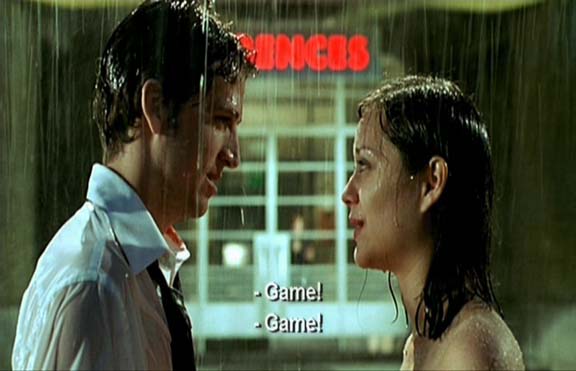
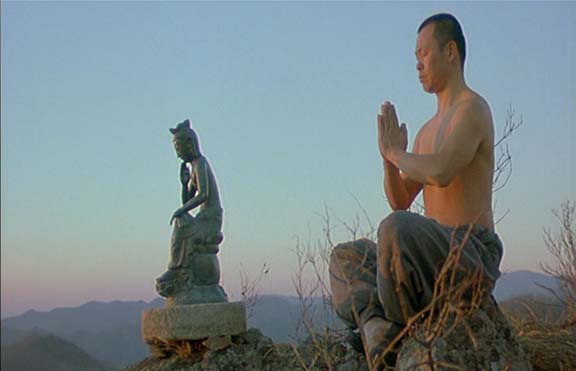
MULAN: SPECIAL EDITION
ALADDIN: PLATINUM EDITION
KAENA: THE PROPHECY
HOME ON THE RANGE
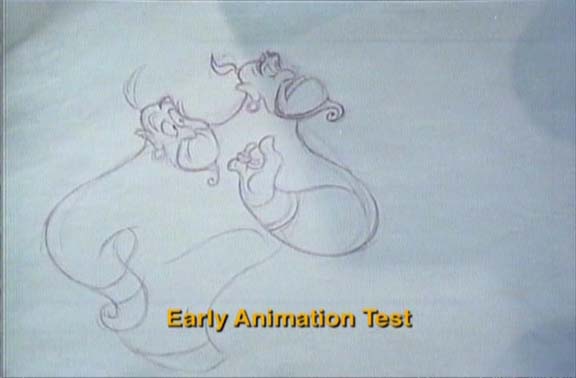
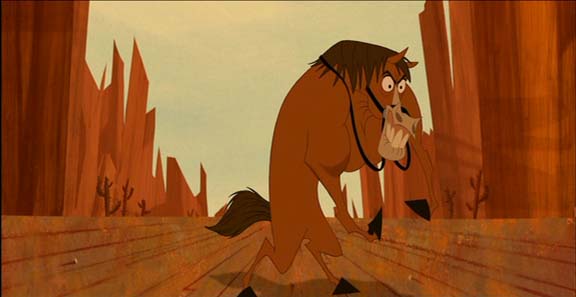
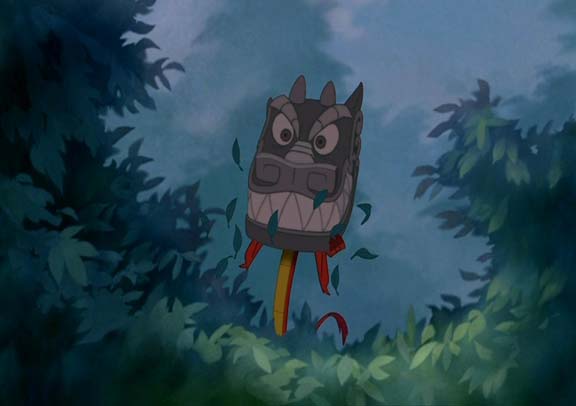
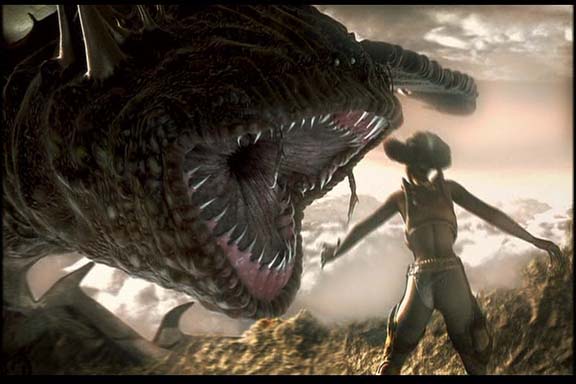
THE HUMAN STAIN
DOGVILLE
COLD MOUNTAIN
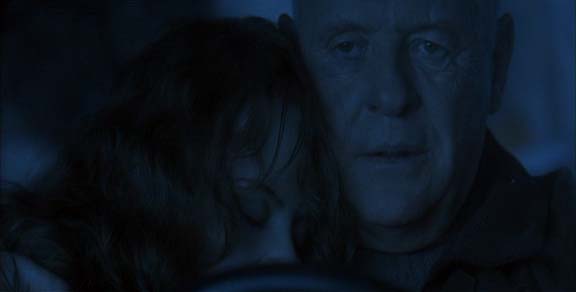
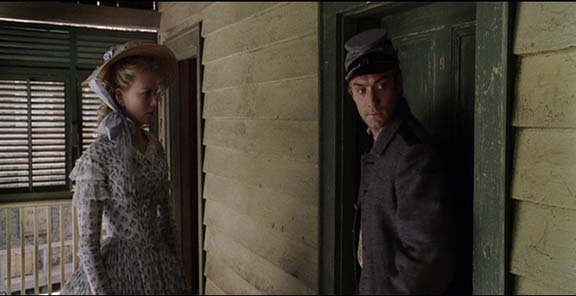

MR. SHOW: THE COMPLETE FOURTH SEASON
DA ALI G SHOW: DA COMPLEET FIRST SEAZON
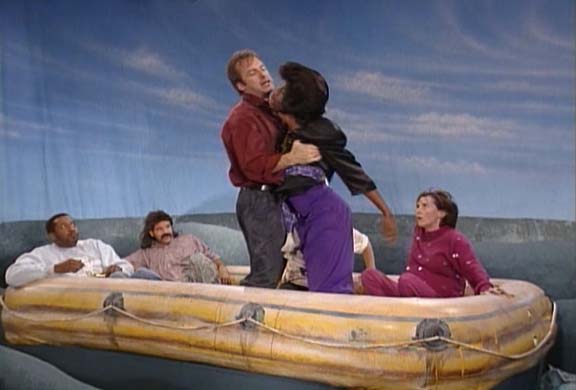

ETERNAL SUNSHINE OF THE SPOTLESS MIND
